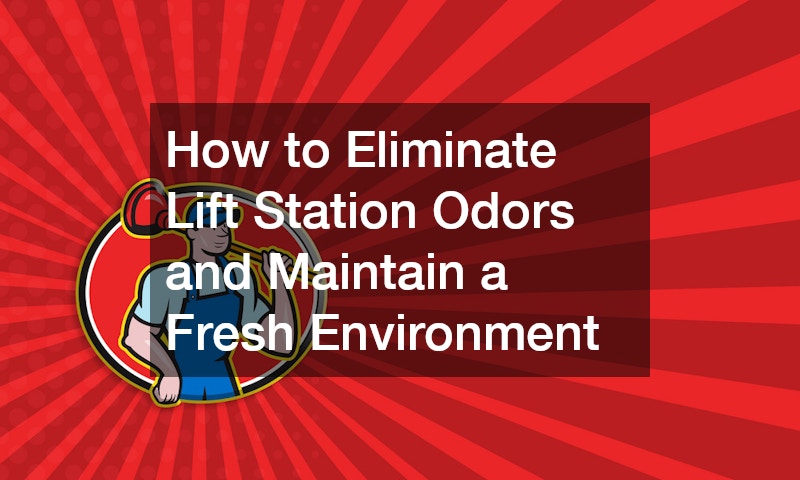Ensuring a fresh environment in lift stations is crucial for both the health of workers and the surrounding community. Lift stations are critical components of wastewater systems, where odors can quickly become unpleasant and even hazardous if not properly controlled. By implementing effective odor control measures, lift station operators can create a safer and more pleasant working environment.
Odors in lift stations can have various causes, including inadequate ventilation, buildup of grease and debris, bacterial growth, malfunctioning equipment, and inefficient waste management practices. Identifying the root causes of odors is essential to implementing targeted solutions for odor elimination and prevention.
In this article, we will explore common causes of lift station odors, effective odor control methods, techniques for preventing odor recurrence, and real-life case studies of successful odor elimination strategies implemented in various cities.
Common Causes of Odors in Lift Stations
Inadequate ventilation is a major factor contributing to lift station odors. Without proper airflow, trapped gases and odors can accumulate inside the station, creating a foul-smelling environment that poses health risks to workers and nearby residents. Regular inspection and maintenance of ventilation systems are essential to ensure efficient odor control.
Buildup of grease and debris in lift stations can also lead to unpleasant odors. Grease and solid waste can decompose over time, producing noxious gases that contribute to the foul smell in the station. Implementing a strict cleaning schedule and using specialized cleaning agents can help prevent the buildup of grease and debris.
Bacterial growth is another common cause of lift station odors. Bacteria thrive in moist and dark environments, such as lift stations, where they break down organic matter and release foul-smelling gases. Regular treatments with bacterial additives can help control bacterial growth and reduce odors in the station.
Effective Odor Control Methods
Regular cleaning and maintenance of lift stations are essential for controlling odors. Removing debris, sludge, and grease buildup from the station’s walls and equipment can significantly reduce odor emissions. Implementing a preventive maintenance schedule can help prevent odors from becoming a recurring issue.
Proper ventilation systems are crucial for effective odor control in lift stations. Ventilation systems should be designed to provide adequate airflow throughout the station, effectively capturing and expelling odors outside. Installing additional ventilation fans or exhaust systems can improve air circulation and reduce odors in the station.
Odor neutralizers, such as deodorizing sprays or granules, can help mask unpleasant odors in lift stations. These products work by chemically altering the odor molecules, neutralizing them and reducing their impact on the surrounding air. Regular application of odor neutralizers can help maintain a fresh environment in the station.
Techniques for Preventing Odor Recurrence
Educating staff on best practices for odor control is essential to prevent odor recurrence in lift stations. Proper training on cleaning procedures, maintenance tasks, and waste management practices can help employees understand their role in maintaining a fresh environment. Regular staff meetings and training sessions can reinforce these practices.
Implementing routine inspections of lift stations is key to identifying and addressing potential odor sources before they become major problems. Inspections should include checking for grease and debris buildup, monitoring ventilation systems, and assessing bacterial growth. Developing a comprehensive inspection checklist can help ensure thorough evaluations of the station.
Utilizing monitoring systems, such as gas detectors or odor sensors, can provide real-time data on odor levels in lift stations. These systems can help operators track odor trends, identify problem areas, and implement targeted odor control measures. Regular monitoring and analysis of data can lead to more effective odor management strategies.
Case Studies: Success Stories in Odor Elimination
City A successfully eliminated lift station odors by implementing a comprehensive odor control plan that included regular cleaning, maintenance, and ventilation system upgrades. By addressing the root causes of odors and implementing proactive solutions, City A was able to maintain a fresh environment in their lift stations and improve worker safety.
City B invested in state-of-the-art equipment, such as advanced filtration systems and odor neutralizing technology, to control odors in their lift stations. By utilizing cutting-edge solutions, City B was able to effectively eliminate odors and improve air quality in their wastewater facilities. The city’s commitment to innovation in odor control has set a new standard for the industry.
City C collaborated with experts in odor control to develop a customized odor management plan for their lift stations. By partnering with specialized consultants and industry professionals, City C was able to implement targeted strategies that addressed the specific odor sources in their stations. The collaboration resulted in significant odor reduction and improved overall operational efficiency.
Maintaining a fresh environment in lift stations is essential for the health and safety of workers, as well as the surrounding community. By addressing common causes of odors, implementing effective odor control methods, and adopting techniques for preventing odor recurrence, lift station operators can create a more pleasant working environment and reduce health risks associated with foul odors.
Real-life case studies demonstrate that proactive odor control measures, such as regular cleaning, maintenance, and ventilation system upgrades, can lead to successful odor elimination and improved air quality in lift stations. By investing in odor control solutions and implementing continuous improvement strategies, cities can effectively manage odors in their wastewater facilities and create a healthier environment for all.





